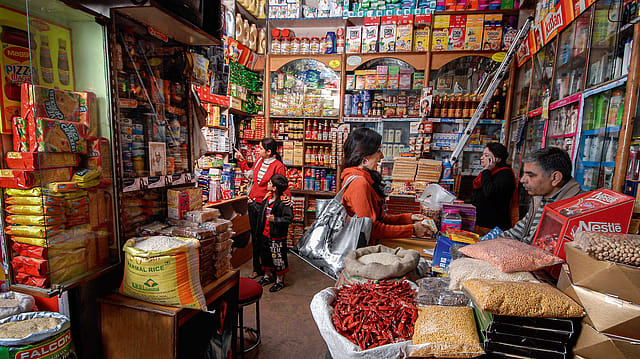10 ideas to lure the urban consumer
ADVERTISEMENT

It’s a given that when an economy grows, its GDP will increase and so will the per capita income. That will put more money in the hands of the consumers, propelling them to spend more.
By all counts, despite the current slowdown in its economy, India continues to attract the attention of companies and foreign investors as it is slated to be one of the fastest-growing large economies. If income growth and urbanisation are tried and tested metrics for consumption growth, there are several distinctive facets that make the Indian economy and its consumers an interesting study.
Firstly, India’s population demographics are unique. It’s got the largest set of young people who will enter the prime consumption age of 30-50 compared to anywhere else in the world. Though, at the moment there is a dearth of jobs, this subset of the population stack up high in importance for consumer companies as they give them a clear two-decade visibility for their business plans.
Secondly, technology-driven business models are disrupting the way consumption takes place in the country. Just like Indians skipped to owning mobile phones instead of landline phones, such leaps are happening in sectors like retail and finance as well. Today, in urban areas, e-commerce is growing in importance even as organised retail is resolving its high-cost real estate woes. India is among the fastest-growing markets for digital banking, thanks to initiatives like the Unified Payments Infrastructure (UPI).
January 2026
Netflix, which has been in India for a decade, has successfully struck a balance between high-class premium content and pricing that attracts a range of customers. Find out how the U.S. streaming giant evolved in India, plus an exclusive interview with CEO Ted Sarandos. Also read about the Best Investments for 2026, and how rising growth and easing inflation will come in handy for finance minister Nirmala Sitharaman as she prepares Budget 2026.
Two types of research formed the basis of this study. The first was a set of focus groups comprising about 200 people, who were used to test certain hypotheses about how consumer attitudes are changing. These groups helped generate a short list of trends to investigate them more fully.
The second part of the research – which followed the focus group study – was a quantitative survey of 5,000 urban consumers in cities that range in size from Mumbai to Panipat. The quantitative survey was conducted in person and had quotas that allowed analysis by respondent’s age, gender, income, as well as by the size of the city.
The study found that consumer behaviour trends were not limited to high-income households or consumers in India’s biggest and most sophisticated cities. It found that India’s smaller tier 2 and tier 3 cities are almost as likely to mirror those in tier 1 cities and metros. Surprisingly, household income did not impact much on the prevalence of the behaviours.
“The surprise isn’t that high-income consumers are adopting these behaviors or that people in big cities are doing so,” said Nimisha Jain, a BCG partner in New Delhi, who leads CCI in emerging markets. “To a large degree, we knew that. The surprise is in the extent of the behaviors in urban centers of every size. Mumbai and Delhi might be leading. But you see the same things happening all over India.”
Here is the list of ten top trends that emerged from the report:
1. Information oriented shopping: 85% of shoppers checked at least two data points before making a purchase, across categories.
2. Shopping to stay trendy: Being up to date with the latest trends mattered to 62%. It mattered more in four-wheelers, gadgets and precious jewelry.
3. Adoption of time-saving services: Precooked meals and online shopping were in as more than half the respondents wanted to create time for other activities.
4. A full-on embrace of health and wellness: Spending on gadgets for health, services, and food mattered to 57% of the respondents. The concern was quite visible in fresh food and packaged beverages.
5. Growing interest in customised product: Again more than half the respondents were willing to pay a premium for what they wanted rather than a standardised product. Vehicles, apparels, accessories, and computers were high on the customisation list.
6. The rise of the female decision-maker: In more than 50% of the household decisions, female consumers had the final say in purchases. Their decisions influenced travel and entertainment and four-wheeler buying though not much for two-wheelers.
7. A preference for Indian brands over international ones: Half the respondents chose Indian stuff in categories like staples.
8. Valuing experience over products: A third of the consumers were willing to downgrade in one category to be able to afford more expensive experiences especially in categories like food and travel.
9. Exclusivity adds value: A third of urban buyers felt that a recent purchase was value for money because it was exclusive.
10. Renting over buying: 17% of consumers have tried renting in at least one category where owning is the norm. Renting four-wheelers is popular though the study did not consider those renting homes.
